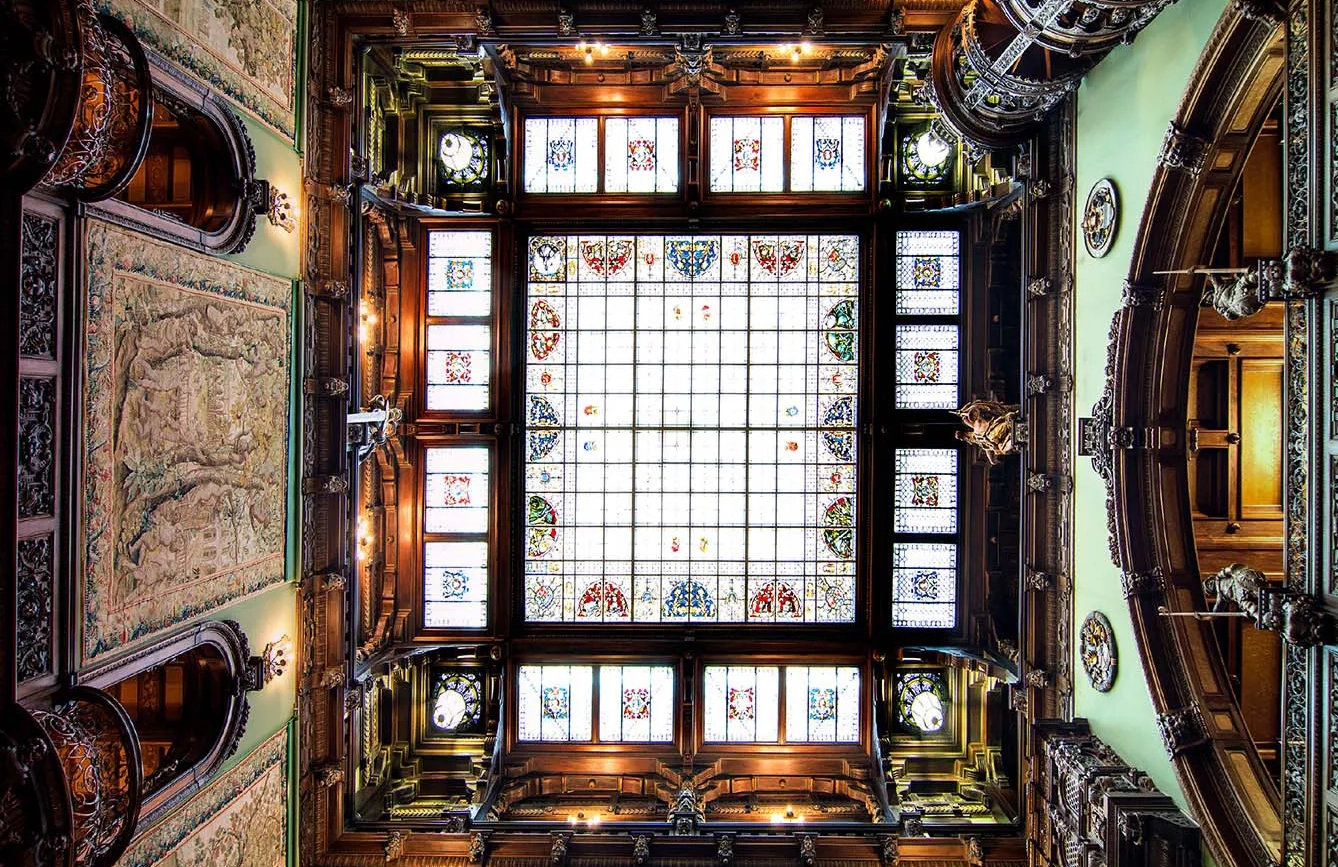Built between 1873-1914 and commissioned by Carol I, the first King of Romania, the Peleș Castle can be easily found among the world’s most beautiful palaces. Surrounded by a grandiose garden, displaying imposing exterior architectural details and complimented by the magnificent and extravagant inside decor, the Peleș Castle catches gathers thousands of visitors from all over the world to Sinaia, Prahova county.
Sparing no expense
King Carol I spared no expense when building what was to become the summer residence of the Royal family. Romania’s first King disregarded all architectural proposals that mimicked the edifices of the West and insisted on a personal and authentic approach to designing the castle. This approach was best understood by German architect Johannes Schultz. Under his guidance, the foundation stones of the castle were finally set in place. It is believed that next to them were hidden no less than 20 Romanian gold coins, the very first ever produced with the portrait of the new ruler, King Carol I, on them.
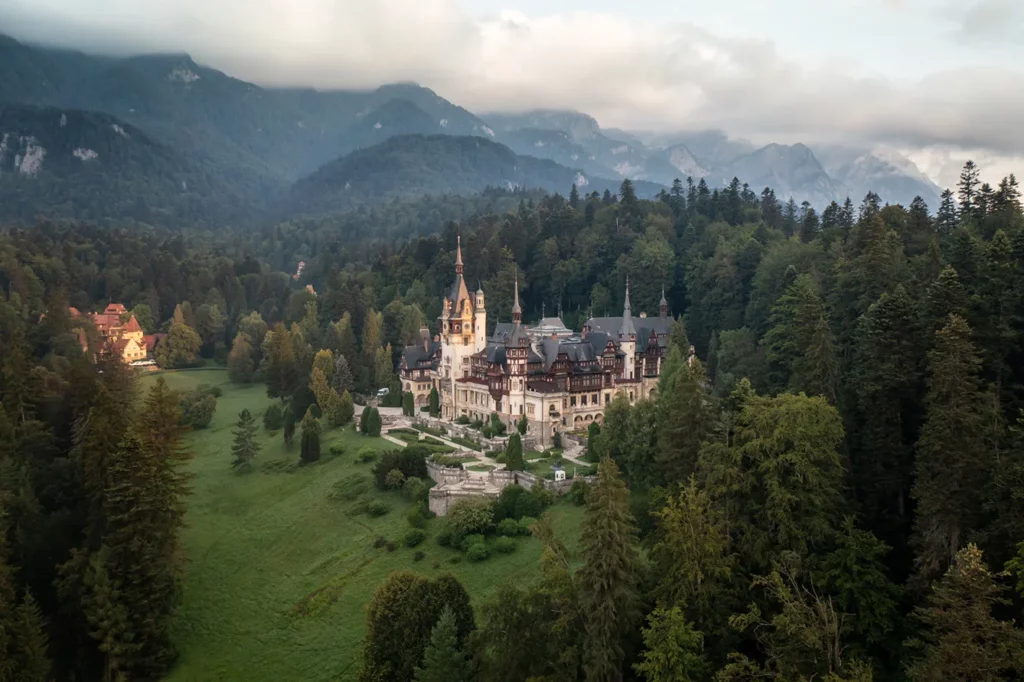
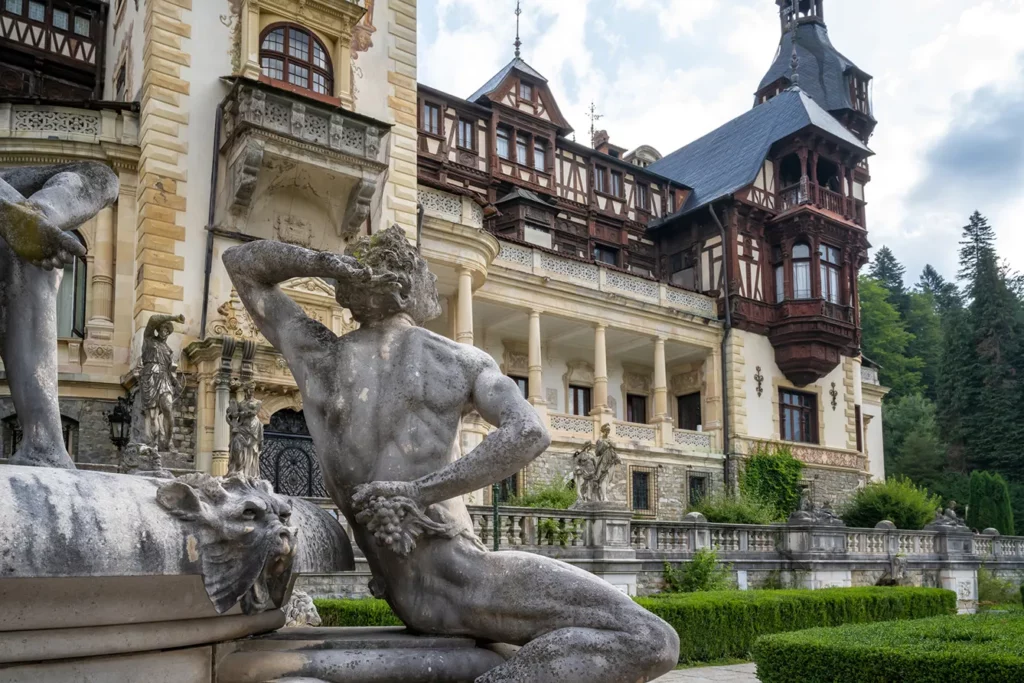
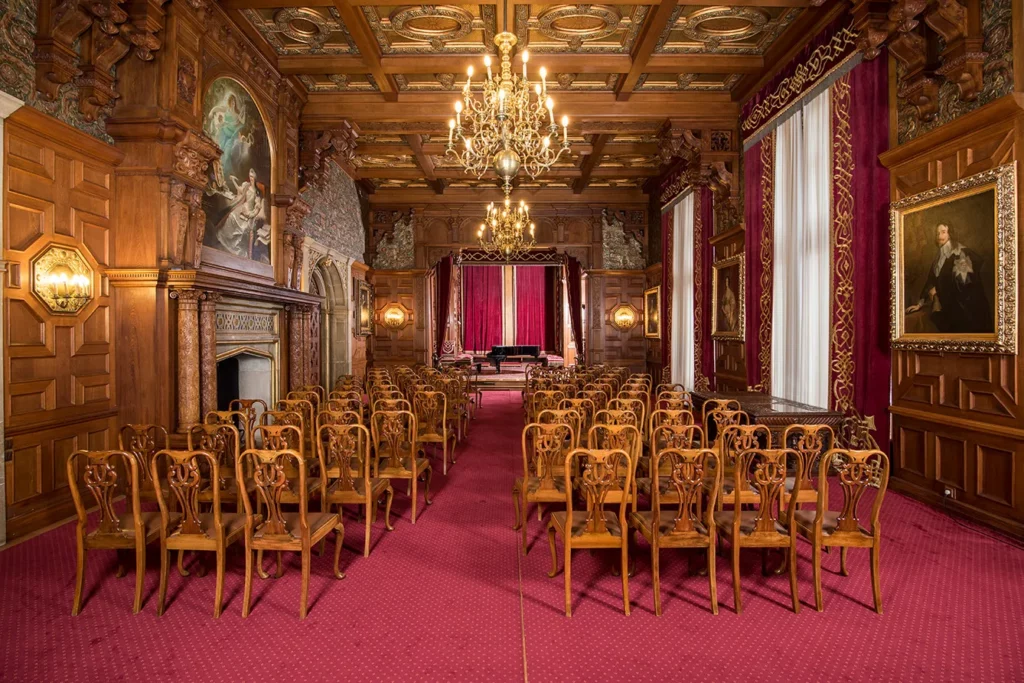
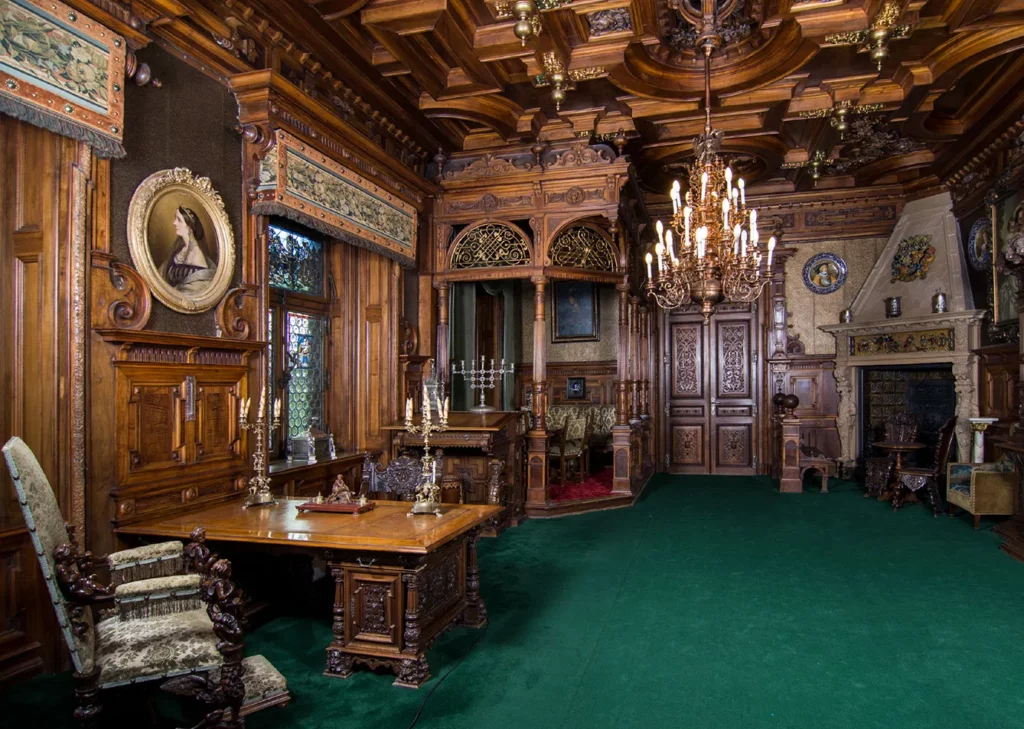
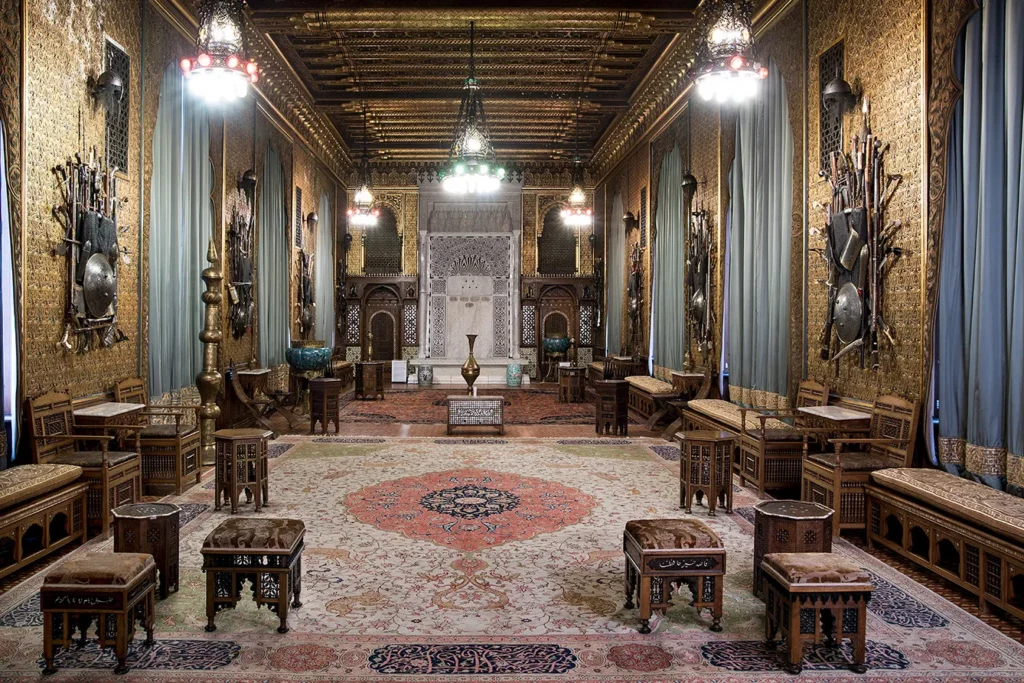

(Bottom row, from left) King Carol I’ s Private Cabinet; The Moorish Hall; The Armoury Hall with Katafrakt armour, cold weapons and small cannons. Photos (3): courtesy of Muzeul Național Peleș
But exterior opulence wasn’t the only desire of the King. Located in the heart of the Bucegi Mountains, at the (back then) border between the Romanian Principalities and the Austro-Hungarian Empire, the Castle was an important political and cultural establishment. Therefore, practicability and innovation were important to the King and were delivered through the beautifully and finely crafted Neorenaissance architecture and design with a modernist and contemporary touch.
The mansion is considered to be the very first entirely electrically lit castle in Europe. The electrical network was installed in 1884, and it already had an emergency generator of its own. The Castle’s hydro-power plant was built later on, making it entirely self-reliant. The Castle also benefitted from central heating. All of the 160 rooms were equipped with radiators, leaving the already-built chimneys purely for decor. But there are more technological wonders inside the Peleș Castle than one may see at first glance.
Full of wonder… and secrets
Access to the second level of the building was made via two fully-functioning lifts completed in 1903, and the underground of the edifice hides a built-in vacuum system that remains, to this day, a rare encounter in Romania. No castle is complete without an extravagant and luscious hall of honor, but Peleș surpasses them all with a mobile, retractable, and electrically-powered glass ceiling that allows guests to enjoy fresh air during day-time events and the beautiful starry sky during the night. Engineering innovation did not end with the building, and the ground underneath the garden is teeming with a series of aqueducts that drain the soil and collect water.
From top to bottom and underneath, every square meter of the famous Castle is studded with technical secrets and wonders. In an era where electricity was the top priority of Kings and Rulers everywhere, Peleș Castle became one of the most modern edifices of its time. Do not let the antique-looking aspect of the Castle fool you. After all, Romania has a history with electricity, Timisoara being the first city in Europe and the second in the world to be electrically lightened. It only makes sense that Europe’s first Castle to be entirely electrified is also in Romania.


